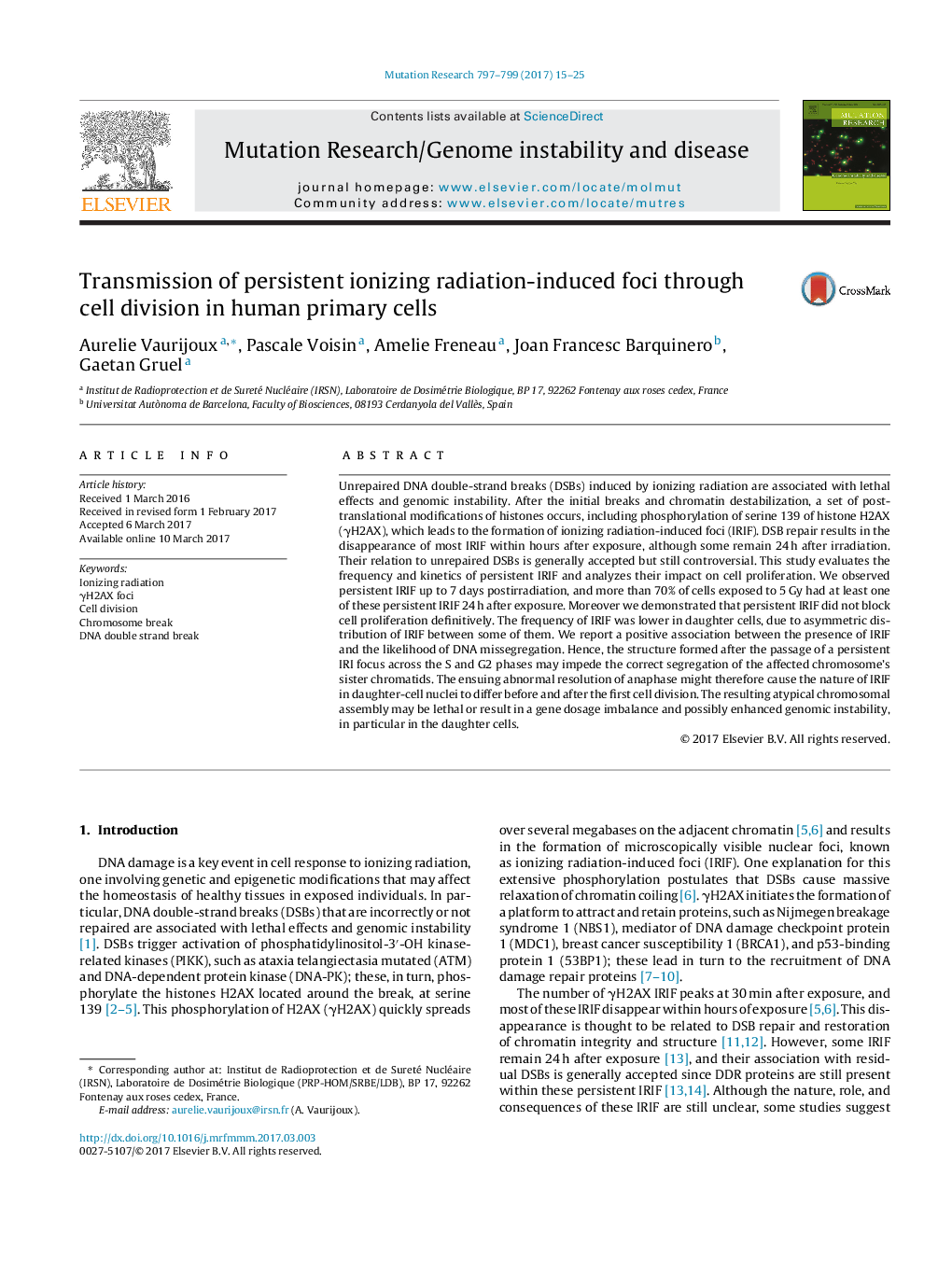| کد مقاله | کد نشریه | سال انتشار | مقاله انگلیسی | نسخه تمام متن |
|---|---|---|---|---|
| 5528680 | 1548305 | 2017 | 11 صفحه PDF | دانلود رایگان |
- Persistent IRIF do not permanently block cell proliferation.
- Persistent IRIF are transmitted in part and sometimes asymmetrically to daughter cells.
- IRIF differ in their nature before and after the first cell division.
Unrepaired DNA double-strand breaks (DSBs) induced by ionizing radiation are associated with lethal effects and genomic instability. After the initial breaks and chromatin destabilization, a set of post-translational modifications of histones occurs, including phosphorylation of serine 139 of histone H2AX (γH2AX), which leads to the formation of ionizing radiation-induced foci (IRIF). DSB repair results in the disappearance of most IRIF within hours after exposure, although some remain 24 h after irradiation. Their relation to unrepaired DSBs is generally accepted but still controversial. This study evaluates the frequency and kinetics of persistent IRIF and analyzes their impact on cell proliferation. We observed persistent IRIF up to 7 days postirradiation, and more than 70% of cells exposed to 5 Gy had at least one of these persistent IRIF 24 h after exposure. Moreover we demonstrated that persistent IRIF did not block cell proliferation definitively. The frequency of IRIF was lower in daughter cells, due to asymmetric distribution of IRIF between some of them. We report a positive association between the presence of IRIF and the likelihood of DNA missegregation. Hence, the structure formed after the passage of a persistent IRI focus across the S and G2 phases may impede the correct segregation of the affected chromosome's sister chromatids. The ensuing abnormal resolution of anaphase might therefore cause the nature of IRIF in daughter-cell nuclei to differ before and after the first cell division. The resulting atypical chromosomal assembly may be lethal or result in a gene dosage imbalance and possibly enhanced genomic instability, in particular in the daughter cells.
Journal: Mutation Research/Fundamental and Molecular Mechanisms of Mutagenesis - Volumes 797â799, March 2017, Pages 15-25
